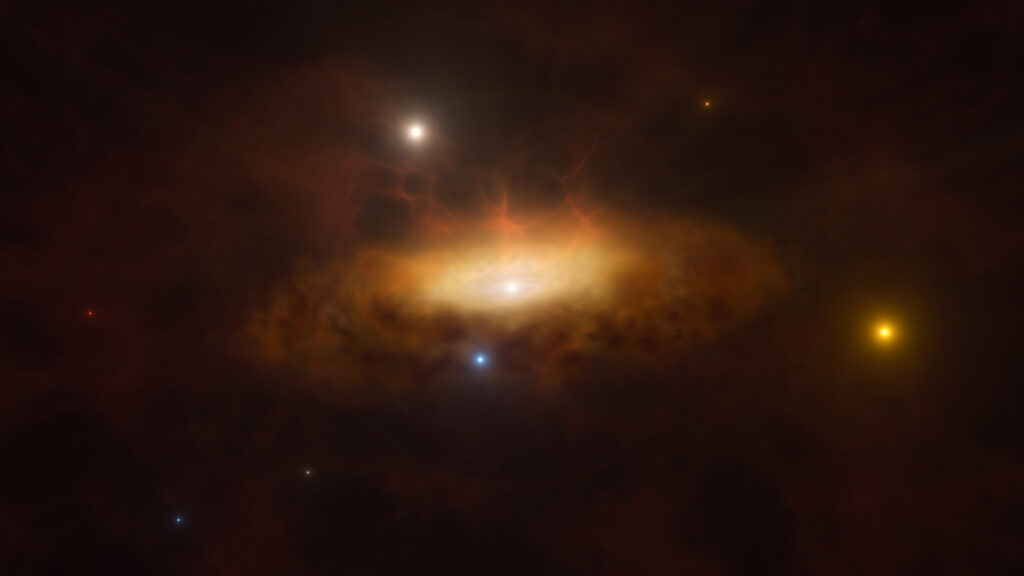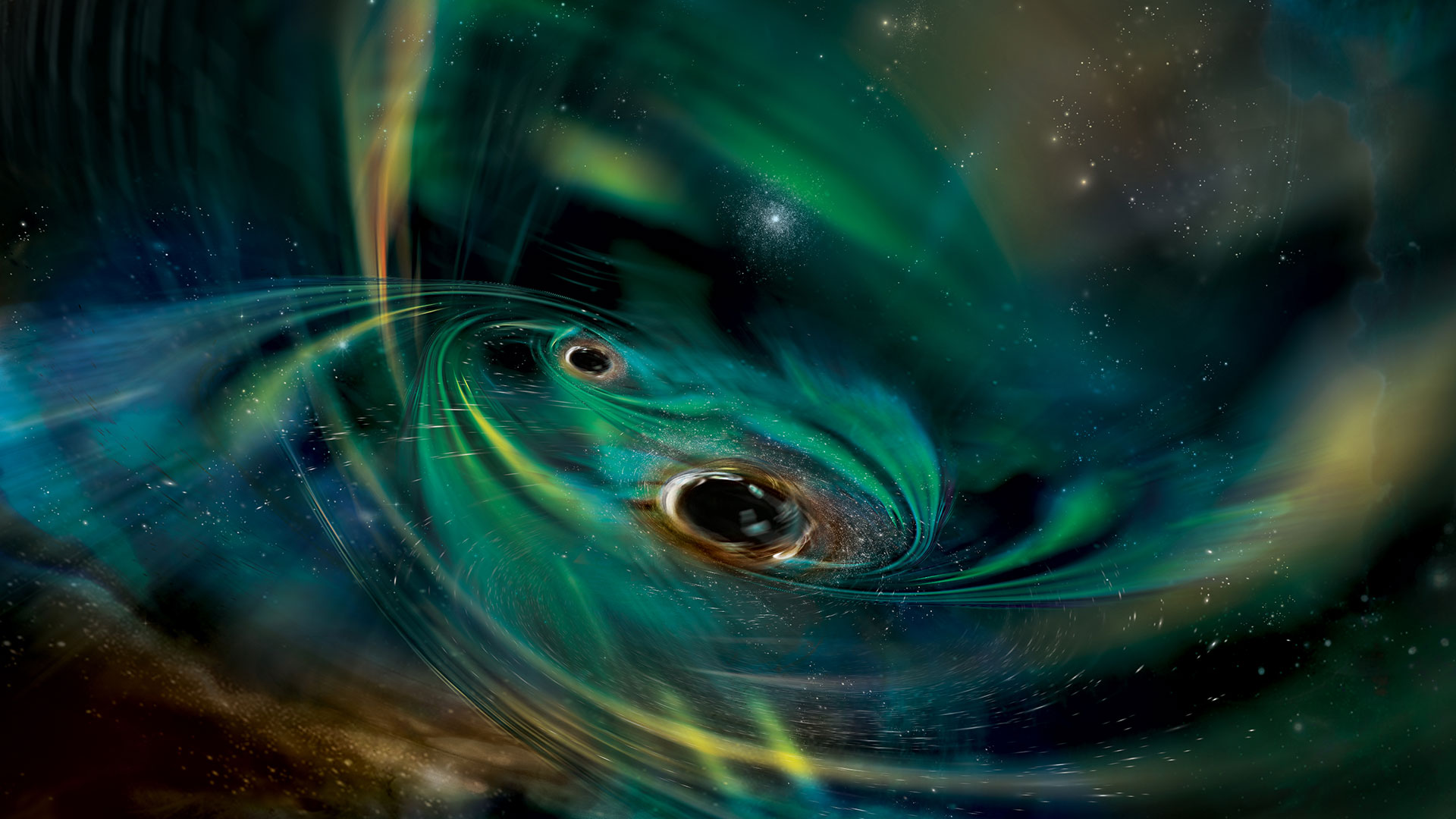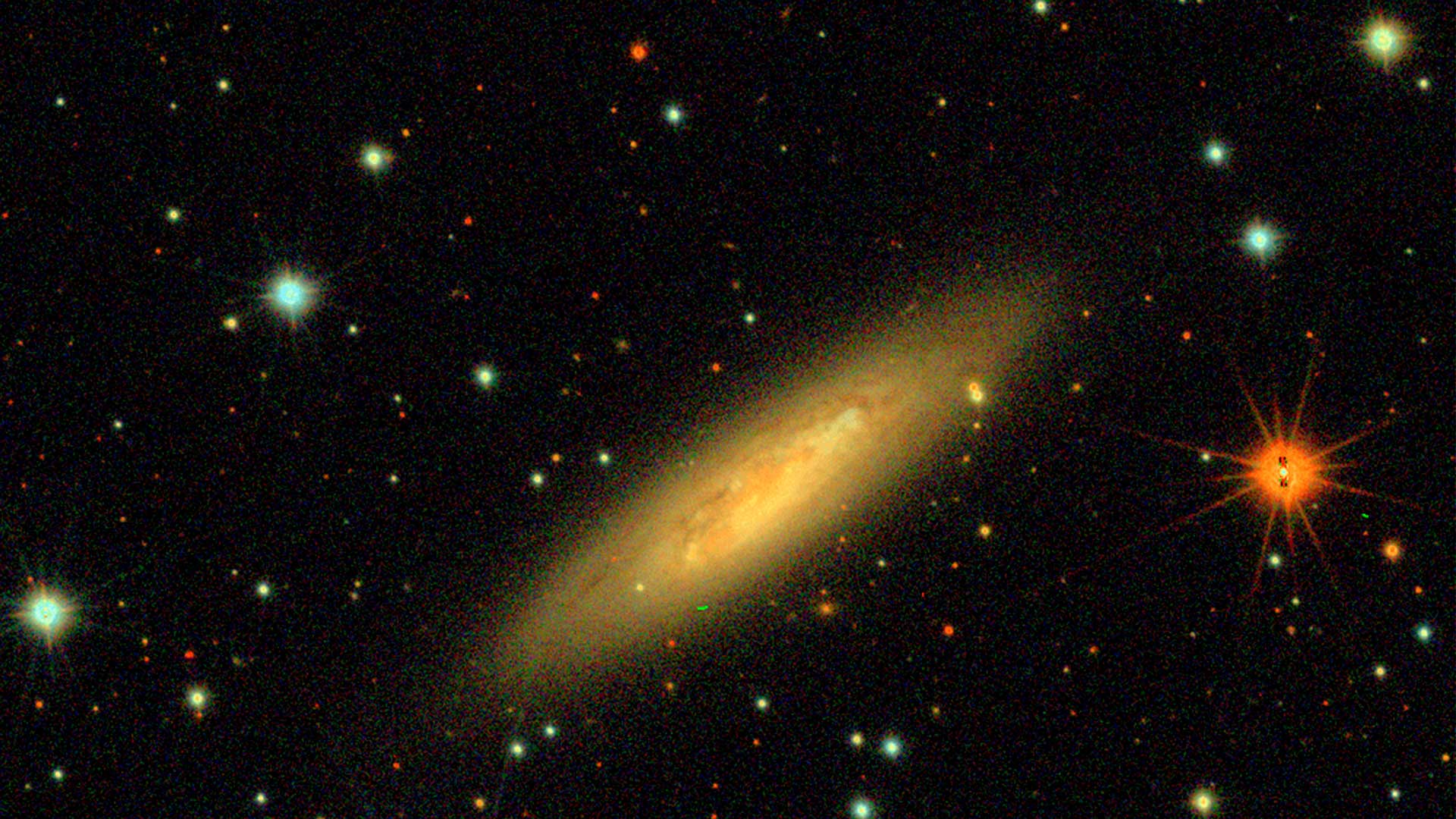
In late 2019 the previously unremarkable galaxy SDSS1335+0728 suddenly started shining brighter than ever before. To understand why, astronomers have used data from several space and ground-based observatories, including the European Southern Observatory’s Very Large Telescope (ESO’s VLT), to track how the galaxy’s brightness has varied. In a study out today, they conclude that they are witnessing changes never seen before in a galaxy — likely the result of the sudden awakening of the massive black hole at its core.
Paula Sánchez, an astronomer at ESO in Germany and at the Millennium Institute for Astrophysics MAS, is the first author of this research, in which Lorena Hernández García, MAS - UV researcher, also participated.
“Imagine you’ve been observing a distant galaxy for years, and it always seemed calm and inactive,” says Paula Sánchez Sáezan astronomer at ESO in Germany and lead author of the study accepted for publication in Astronomy & Astrophysics. De repente, su [núcleo] comienza a mostrar drásticos cambios en el brillo, de una forma totalmente diferente a lo que se había observado antes». Esto es lo que le sucedió a SDSS1335+0728 cuando, en diciembre de 2019 [1], aumentó su brillo de forma impactante. Por eso ahora se clasifica como un «núcleo galáctico activo» (AGN por sus siglas en inglés, una región compacta y brillante alimentada por un agujero negro masivo).
Some phenomena, like supernova explosions or tidal disruption events — when a star gets too close to a black hole and is torn apart — can make galaxies suddenly light up. But these brightness variations typically last only a few dozen or, at most, a few hundreds of days. SDSS1335+0728 is still growing brighter today, more than four years after it was first seen to ‘switch on’. Moreover, the variations detected in the galaxy, which is located 300 million light-years away in the constellation Virgo, are unlike any seen before, pointing astronomers towards a different explanation.
The team tried to understand these brightness variations using a combination of archival data and new observations from several facilities, including the X-shooter instrumenton ESO’s VLT in Chile’s Atacama Desert [2]. Comparing the data taken before and after December 2019, they found that SDSS1335+0728 is now radiating much more light at ultraviolet, optical, and infrared wavelengths. The galaxy also started emitting X-rays in February 2024. “This behavior is unprecedented,” says Sánchez Sáez, who is also affiliated with the Millennium Institute of Astrophysics (MAS) in Chile.
“The most tangible option to explain this phenomenon is that we are seeing how the [core] of the galaxy is beginning to show (...) activity,” says co-author Lorena Hernández García, from MAS and the Universidad de Valparaísoin Chile «De ser así, esta sería la primera vez que vemos la activación de un agujero negro masivo en tiempo real».
Massive black holes — with masses over one hundred thousand times that of our Sun — exist at the centre of most galaxies, including the Milky Way. “These giant monsters usually are sleeping and not directly visible,” explains co-author Claudio Ricci, from the Universidad Diego Portales, también en Chile. «En el caso de SDSS1335+0728, pudimos observar el despertar del agujero negro masivo, [que] de repente, comenzó a darse un festín con el gas disponible en sus alrededores, volviéndose muy brillante».
“[This] process (...) has never been observed before,” Hernández García says. Previous studies reported inactive galaxies becoming active after several years, but this is the first time the process itself — the awakening of the black hole — has been observed in real time. Ricci, who is also affiliated with the Kavli Institute for Astronomy and Astrophysics at Peking University, China, adds: “This is something that could happen also to our own Sgr A*, the massive black hole (...) located at the centre of our galaxy," but it is unclear how likely this is to happen.
Follow-up observations are still needed to rule out alternative explanations. Another possibility is that we are seeing an unusually slow tidal disruption event, or even a new phenomenon. If it is in fact a tidal disruption event, this would be the longest and faintest such event ever observed. “Regardless of the nature of the variations, [this galaxy] provides valuable information on how black holes grow and evolve,” Sánchez Sáez says. «Esperamos que instrumentos como MUSE en el VLT o los del próximo Telescopio Extremadamente Grande (ELT, por sus siglas en inglés) sean clave para comprender [por qué la galaxia está brillando]».
Notas
[1] The SDSS1335+0728 galaxy’s unusual brightness variations were detected by the Zwicky Transient Facility (ZTF) telescope in the US. Following that, the Chilean-led Automatic Learning for the Rapid Classification of Events (ALeRCE) broker classified SDSS1335+0728 as an active galactic nucleus.
[2] The team collected archival data from NASA’s Wide-field Infrared Survey Explorer (WISE) and Galaxy Evolution Explorer (GALEX), the Two Micron All Sky Survey (2MASS), the Sloan Digital Sky Survey (SDSS), and the eROSITA instrument on IKI and DLR’s Spektr-RG space observatory. Besides ESO’s VLT, the follow-up observations were conducted with the Southern Astrophysical Research Telescope (SOAR), the W. M. Keck Observatory, and NASA’s Neil Gehrels Swift Observatory and Chandra X-ray Observatory.
Imagen principal: A finales de 2019, la galaxia SDSS1335+0728 de repente comenzó a brillar más que nunca y se clasificó como un núcleo galáctico activo, alimentado por un agujero negro masivo ubicado en el núcleo de la galaxia. Esta es la primera vez que se observa en tiempo real el despertar de un agujero negro masivo. Esta reproducción artística muestra el creciente disco de material que es atraído por el agujero negro a medida que se alimenta del gas disponible en su entorno, lo que hace que la galaxia se «encienda». Crédito: ESO/M. Kornmesser












